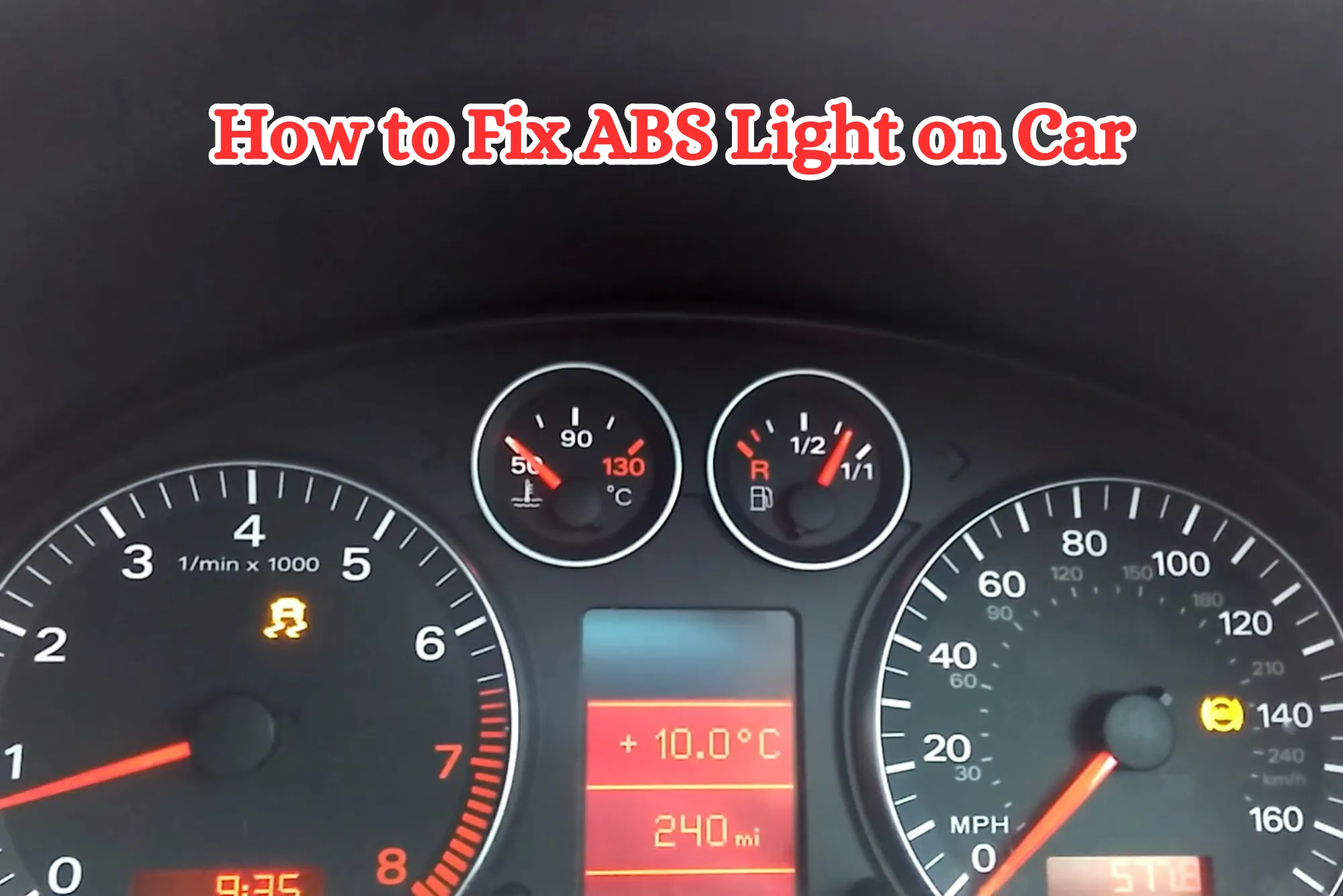How to Fix ABS Light on Car
If your ABS (Anti-lock Braking System) light is illuminated on your dashboard, it’s crucial to address the issue promptly to ensure your safety on the road. Here’s a detailed guide on troubleshooting and fixing the ABS light on your car.
Understanding the ABS Light
The ABS light indicates a problem with your vehicle’s anti-lock braking system. When this light is on, it typically means there’s a fault in the ABS system, which may compromise its functionality. Ignoring this warning can lead to decreased braking performance, especially in hazardous road conditions.
Common Causes of ABS Light
Several factors can trigger the ABS light, ranging from minor issues to more severe problems. Here are some common causes:
Faulty Wheel Speed Sensors
Wheel speed sensors are crucial components of the ABS system. If these sensors malfunction or fail, they can trigger the ABS light. Inspect each sensor for damage or corrosion and replace as needed.

ABS Module Failure
The ABS module, also known as the ABS controller, controls the operation of the ABS system. If this module fails, it can cause the ABS light to come on. Professional diagnosis and replacement may be necessary to resolve this issue.
Low Brake Fluid Level
In some cases, a low brake fluid level can trigger the ABS light. Check your brake fluid reservoir and refill it to the recommended level. If the fluid level keeps dropping, it could indicate a leak in the brake system that needs immediate attention.
ABS Fuse or Relay Issues
A blown fuse or faulty relay in the How to Fix ABS Light on Car circuit can also cause the ABS light to illuminate. Inspect the ABS fuse and relay for any signs of damage and replace them if necessary.
Worn Brake Pads or Rotors
Excessively worn brake pads or rotors can affect the performance of the ABS system, leading to the activation of the ABS light. Inspect your brakes for wear and replace them if needed.

Troubleshooting and Fixing the ABS Light
Now that you understand the potential causes of the ABS light, let’s discuss how to troubleshoot and fix the issue:
Perform a Visual Inspection
Start by visually inspecting the ABS system components, including the wheel speed sensors, ABS module, brake fluid reservoir, fuses, and relays. Look for any signs of damage, corrosion, or leaks.
Check for Diagnostic Trouble Codes (DTCs)
Use an OBD-II scanner to retrieve diagnostic trouble codes (DTCs) stored in the vehicle’s computer. These codes can provide valuable insight into the specific issue causing the ABS light to come on.
Test Wheel Speed Sensors
Test each wheel speed sensor using a multimeter to ensure they’re functioning correctly. If a sensor is faulty, replace it following the manufacturer’s recommendations.
Inspect Brake Components
Inspect the brake pads, rotors, calipers, and brake lines for any signs of wear or damage. Replace any worn components and repair any leaks in the brake system.
Reset the ABS System
After addressing the underlying issue, reset the ABS system using an OBD-II scanner to clear any stored DTCs and reset the ABS light.
Fixing the ABS light on your car requires a systematic approach to identify and address the underlying issue. By following the troubleshooting tips outlined in this guide, you can resolve the problem and restore your vehicle’s ABS system to optimal working condition.
s presso car price
The S Presso car, manufactured by Maruti Suzuki, offers a blend of style, affordability, and practicality. With its compact design and efficient engine, the s presso car price is an ideal choice for urban commuters seeking a budget-friendly vehicle. Available in various trim levels, the S Presso offers different features to suit different preferences and budgets. Despite its small size, the S Presso boasts a spacious interior with ample legroom and cargo space, making it suitable for both daily commutes and weekend getaways. With its competitive pricing and impressive fuel efficiency, the S Presso presents excellent value for money in the compact car segment.
al wasim auto spare parts
Al Wasim Auto Spare Parts is a reputable supplier of high-quality automotive parts and accessories in the UAE. With a vast inventory of genuine parts for various makes and models, Al Wasim Auto Spare Parts caters to the needs of both individual car owners and professional mechanics. Whether you’re looking for engine components, electrical parts, suspension systems, or body panels, Al Wasim Auto Spare Parts has you covered. With a commitment to customer satisfaction and competitive pricing, Al Wasim Auto Spare Parts has earned a reputation as a trusted source for automotive parts in the region.








